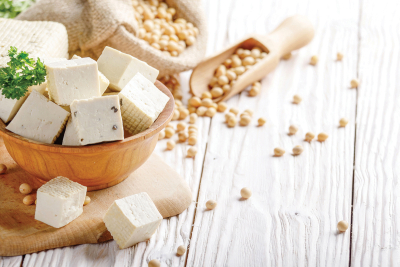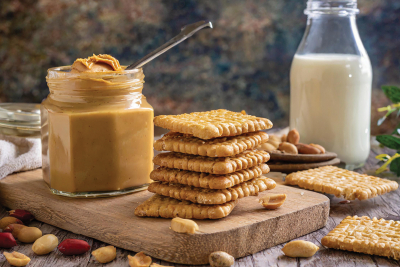Growing plants from seeds — the basics
Editor’s note: (This is the second of a 3-part series on growing plants from seeds.)
Growing plants from seeds can save you money, and give you many more plant varieties to choose from. If you provide the conditions they need, seeds will germinate and grow into healthy plants. Here’s how to get them growing.
Growing medium
What you plant the seeds in is important. The medium must be fine-textured and uniform; well aerated, but capable of holding moisture; have low fertility; and be free of insects, weeds and diseases.
The most popular starting media are peat-based, with vermiculite, perlite, or ground pine bark added. You’ll find these in seed starting kits at the home center or nursery, or in seed catalogs. Don’t use garden soil, potting soil, or topsoil: they are too heavy and do not drain well enough for germinating seeds and growing tiny seedlings.
Containers
Many different plastic containers for starting seeds are available. Compressed peat pots and peat pellets (that expand when soaked in water) are also good choices. But a wide variety of household containers will do just as well. Butter tubs, Styrofoam cups, cut-off beverage cartons, or anything else you have will work. Poke several holes in the bottom to allow for drainage. Wash the container completely, then sterilize by soaking in a 1% bleach solution for a few minutes, and allow to dry.
Sowing
Some terms need clarifying. Most seeds are sown in a “seed flat.” Seedlings are transplanted into a “pot.” Seeds that will not be transplanted are sown directly in the “pot” where they will grow. Seed flats and pots may be placed in “trays” that allow watering the plants from the bottom.
The seed packet will tell you how far in advance of the last frost date to sow the seeds. The traditional last frost date in Haywood County is May 15th. Planting too soon results in plants that are too large to transplant easily. Planting too late delays flowering and fruiting. If no planting depth is recommended on the packet, cover the seeds only to their thickness. Don’t cover very small seeds at all. Separate seeds by a half inch or so; this will make transplanting easier. Cover the seed flat with clear plastic to keep the medium from drying out. Place the flat in a tray with enough water in it to cover the holes in the bottom of the container. Put the tray and seed flat in a warm, well-lit place, but not in direct sunlight. Monitor daily to insure enough water is in the tray.
Transplanting
After the seedlings emerge, remove the plastic cover. When the first true leaves (“second leaves”) appear, transplant into pots. Use a plastic knife or pointed craft stick to dig out a seedling, picking it up by the leaves (holding a seedling by the stem may permanently damage it.) Plant in a pot at about the same level it was growing in the seed flat.
Transplant only the number of seedlings you are going to use (with a safety factor built in.) Discard the others, however cruel this may seem, unless you wish to raise plants for your entire community. For example, if I need 25 petunias for a specific flower bed, I’ll plant 35 to 40 seeds, and transplant the best 30 seedlings. After planting outside I keep the 5 extra plants for a few days to make sure all the plants in the ground survive. Then I give the extras away.
You can sow some seeds directly in the pot that the seedling will grow in without transplanting. For example, sow 3 tomato seeds in each pot, then snip off all but the best seedling. Sowing directly into pots is best for hard-to-transplant varieties; check the seed packet for information.
Fertilize every two weeks with half-strength liquid fertilizer. Add water and fertilizer to the tray (instead of pouring on top of the seedlings, which can displace enough medium to expose their roots.) Keep the seedlings in a brightly lit area, but not in direct sunlight.
And that’s all there is to starting seeds indoors!
Other notes
Cleanliness is essential in your indoor greenhouse. Maintain this area as if it were your kitchen. If you bring plants in from outside to winter in the house, keep them elsewhere, because they are likely sources for insects that can infect your seedlings and be a general nuisance.
To move plants outside, slowly adapt them to outside conditions over a couple of weeks. Give them only filtered shade at first, and gradually allow them to see more and more sunlight. Then they’ll be ready for your beds or outdoor containers. This is called “hardening off.”
Don’t go on an extended vacation. This isn’t a whole lot of work, but it does require at least a couple minutes of attention every day or two. Seedlings allowed to go bone dry will not be happy.
Jim Janke is a Master Gardener Volunteer in Haywood County. For more information call the Haywood County Extension Center at 828.456.3575.
Grow your plants from seeds
By Jim Janke
Editor’s note: This is the first of a three-part series on growing plants from seeds. Today we talk about the benefits of growing plants from seeds, and what seeds need to germinate. Next week we’ll discuss how to get them growing. And we’ll wrap up the topic in 2 weeks with examples of plants that are easy to grow from seeds.”
I started a packet of dianthus seeds on a whim almost 30 years ago. The plants grew well indoors and bloomed profusely the first year outside. I was hooked. Now I start 30 or more types of seeds indoors each year, including annuals, perennials, vegetables and herbs. This series of columns will help you grow plants from seeds yourself. It is easy and fun.
Why grow plants from seeds?
If you want several (or more) plants of the same variety, starting plants from seeds can save you money. A packet of 30 tomato seeds might cost $2.50, from which you can reasonably expect to get at least 20 plants. Including growing media, containers, and the electricity to power a grow light or two, those 20 plants are likely to cost less than 50 cents each. What you are going to do with all those tomatoes, though, is a topic for a cooking column.
Or if you need two dozen marigolds, you can grow them from seeds for less than $10, when those same plants would cost $30 or more at the home center or nursery.
Another big advantage for growing plants from seeds is that you have access to many more varieties of flowers and vegetables. Home centers and nurseries typically stock only the most popular varieties. Seed catalogs have a tremendous selection.
For example, Stokes Seeds’ online catalog lists 127 different petunias in as many as 31 different colors and color mixes. They also list 100 different tomatoes, including beefsteak, cherry, plum, heirloom, greenhouse, and novelty types. Other seed companies have similar offerings.
What seeds want
(No, this isn’t a Mel Gibson film on horticulture.) The conditions both inside and outside the seeds must be favorable for germination. All seeds need water and air. Most have a specific temperature range that they like best. Lettuces like cool temperatures to germinate, while tomatoes do better in the 80° range. Many seeds — especially smaller ones like petunias and begonias — require light to get started.
Some seeds benefit from a dramatic change in the internal or external environment to help break dormancy. For example, parsley germinates better if you soak the seeds for a week before planting. Snapdragons and carnations benefit from putting the seed packet in the freezer for a day or two. Geraniums need to have their seed coats cut (although many geranium seeds come with this already done.)
In order to germinate the potential for producing a plant must be contained within the seed itself. This seems obvious, but seeds can lose their viability through age, or exposure to moisture, cold or heat. Each seed packet should indicate the year for which the seeds were packaged. Some seeds can be stored for many years, while others lose their viability quickly. Until you get some experience, using fresh seeds will improve your chances.
All of this sounds a lot more complicated than it really is. Seed packets have guidelines for when to plant, planting depth, the best temperature range, and if any assistance is needed to break dormancy. Catalogs from Stokes, Johnny’s and Territorial also have detailed seed starting information.
Jim Janke is a Master Gardener Volunteer in Haywood County. For more information call the Haywood County Extension Center at 828.456.3575.
In winter, the joy of gardening is the beauty of a blank slate
By Marsha Crites • Guest Columnist
Whether I am working on a watercolor design, organizing a community group, decorating a room, or getting to know a new person, I always enjoy beginning with a blank slate. No old baggage, muddled colors, or overgrown shrubs to deal with; just a nice open space with no clutter. Remember as a child the joy of a blank piece of paper and a new 64 Crayola set? Ah, the possibilities.
Garden questions
By Jim Janke • Special to the Smoky Mountain News
Editor’s note: This is the first of what will become a regular feature on gardening by the Haywood County master gardeners. Look for it every other week.
“I can dig it, he can dig it,
She can dig it, we can dig it,
They can dig it, you can dig it........”
Getting close to the food you eat
By Adam Bigelow • Guest Columnist
The morning chill had lifted, mist had risen into the air, and as I walked towards the waiting group I had no idea what to expect from this day. We were all here for the same purpose, and my apprehension had not dissolved with the mist. I was running late this morning and afraid that I had missed the event, but out of the corner of my eye I saw the guest of honor. Tied to a swing set. Awaiting his fate.
Tomatoes really can save the world
I am a firm believer that the world would be a much better place if everyone just grew tomatoes.
This thought came to me the other night; I was making pizza for the family and wished I had some fresh tomatoes to slice for the topping. Earlier that day I was working in the garden admiring my tomato plants, the small green fruits were no larger than golf balls, and I was already anticipating the harvest of my first juicy, red ripe tomato.
Air time: Students help with ozone study in high elevation garden
When Aaron Patterson graduated from Tuscola High this year, little did he know a big chunk of his summer break would be spent, clipboard in hand, sprawled out in the dirt on a 5,000-foot mountain top, sharing long intimate moments with the leaves of a wild coneflower plant.
Time to think about gardening in ‘06
Have you started making your 2006 gardening plans yet? It’s time. The garden catalogs started arriving in the mail several weeks ago: Johnny’s, Burpee’s, Pine Tree, Park’s, Shumway’s, Seeds of Change, etc. Folks have been studying these sorts of publications with pleasure for decades.









